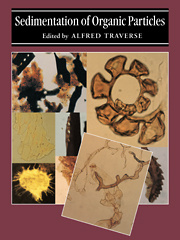Sedimentation of Organic Particles
Langue : Anglais
Coordonnateur : Traverse Alfred

This book looks at the sedimentation of the organic material found in sedimentary rocks.
Microscopic organic-walled fossils are found in most sedimentary rocks. The organic particles - spores, pollens and other land and marine derived microfossils, representing animals, plants, fungi and protists - can be extracted and used to date the rock, reveal details of the original sedimentary environment and provide information on the climate of the time. The mix within a sediment of whole organic particles - palynomorphs - and organic fragments - palynodebris - form palynofacies. This book presents research work on the sedimentation of components of palynofacies and details their importance for sequence stratigraphy and the interpretation of ancient biologic and geologic environments. A comprehensive introduction to the subject is presented in the first chapter. Palynosedimentation in modern environments, the reconstruction of terrestrial vegetation and the application of the data to sequence stratigraphy are then considered. Later chapters detail various quantitative methods and their specific applications in the subject. This is a valuable reference work for palynologists and sedimentologists and also for paleobiologists, and for professionals working in the hydrocarbons industries.
Part I. Introduction: 1. Sedimentation of palynomorphs and palynodebris: an introduction; Part II. Studies of Palynosedimentation in Modern Environments: A. Palynomorph sedimentation; 2. The sorting of spores and pollen by water: experimental and field evidence; 3. Transport and deposition of pollen in an estuary: signature of the landscape; 4. Pollen preservation in alkaline soils of the American Southwest; 5. Wind and water transport and sedimentation of miospores along two rivers subject to major floods and entering the Mediterranean Sea at Calvi (Corsica, France); 6. Sedimentation of land-derived palynomorphs in the Trinity-Galveston Bay area, Texas; B. Palynofacies and palynodebris sedimentation; 7. The genesis and sedimentation of phytoclasts with examples from coastal environments; 8. Palynofacies of some recent marine sediments: the role of transportation; 9. Maceral palynofacies of the Louisiana deltaic plain in terms of organic constituents and hydrocarbon potential; 10. Organic sedimentation in a carbonate region; 11. An approach to a standard terminology for palynodebris; 12. Relationships of palynofacies to coal-depositional environments of the upper Paleocene of the Gulf Coast basin, Texas, and the Powder River basin, Montana and Wyoming; Part III. Reconstruction of Late Cenozoic Vegetation and Sedimentary Environments from Palynological Data: 13. Quaternary terrestrial sediments and spatial scale: the limits to interpretation; 14. Pollen and spores in Quaternary lake sediments as sensors of vegetation composition: theoretical models and empirical evidence; 15. Paleoecological interpretation of the Trail Ridge sequence, and related deposits in Georgia and Florida, based on pollen sedimentation and clastic sedimentology; Part IV. Application of Data on Palynosedimentation to Solution of Geological Problems: A. Sedimentary cycles: 16. Polynology of sedimentary cycles; B. Sequence stratigraphy and sedimentation of organic particles; 17. Particulate organic matter, maceral facies models, and applications to sequence stratigraphy; C. Quantitative methods and applications thereof; 18. Association of palynomorphs and palynodebris with depositional environments: quantitative approaches; 19. A quantitative approach to Triassic palynology: the Lettenkeuper of the Germanic Basin as an example; 20. Palynomorph concentration in studies of Paleogene nonmarine depositional environments of Wyoming; D. Specific examples of applications; 21. Multivariate analyses of palynomorph data; 22. Relationships between depositional environments and changes in palynofloras across the K-T boundary interval; 23. Sedimentation of palynomorphs in rocks of pre-Devonian age; Part V. Appendix: modern pollen transport and sedimentation: an annotated bibliography.
Date de parution : 07-2005
Ouvrage de 560 p.
21x27.9 cm
Thème de Sedimentation of Organic Particles :
© 2024 LAVOISIER S.A.S.



